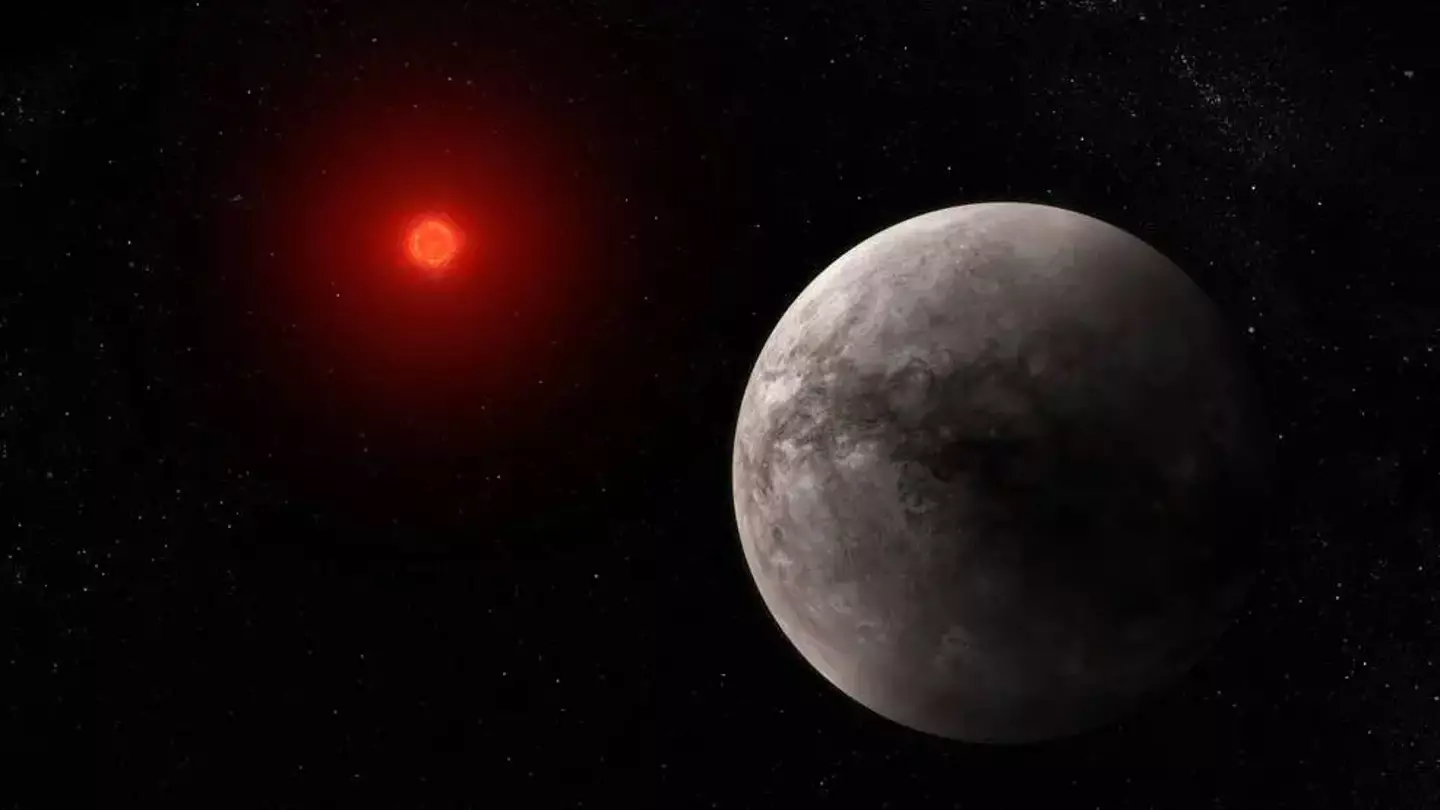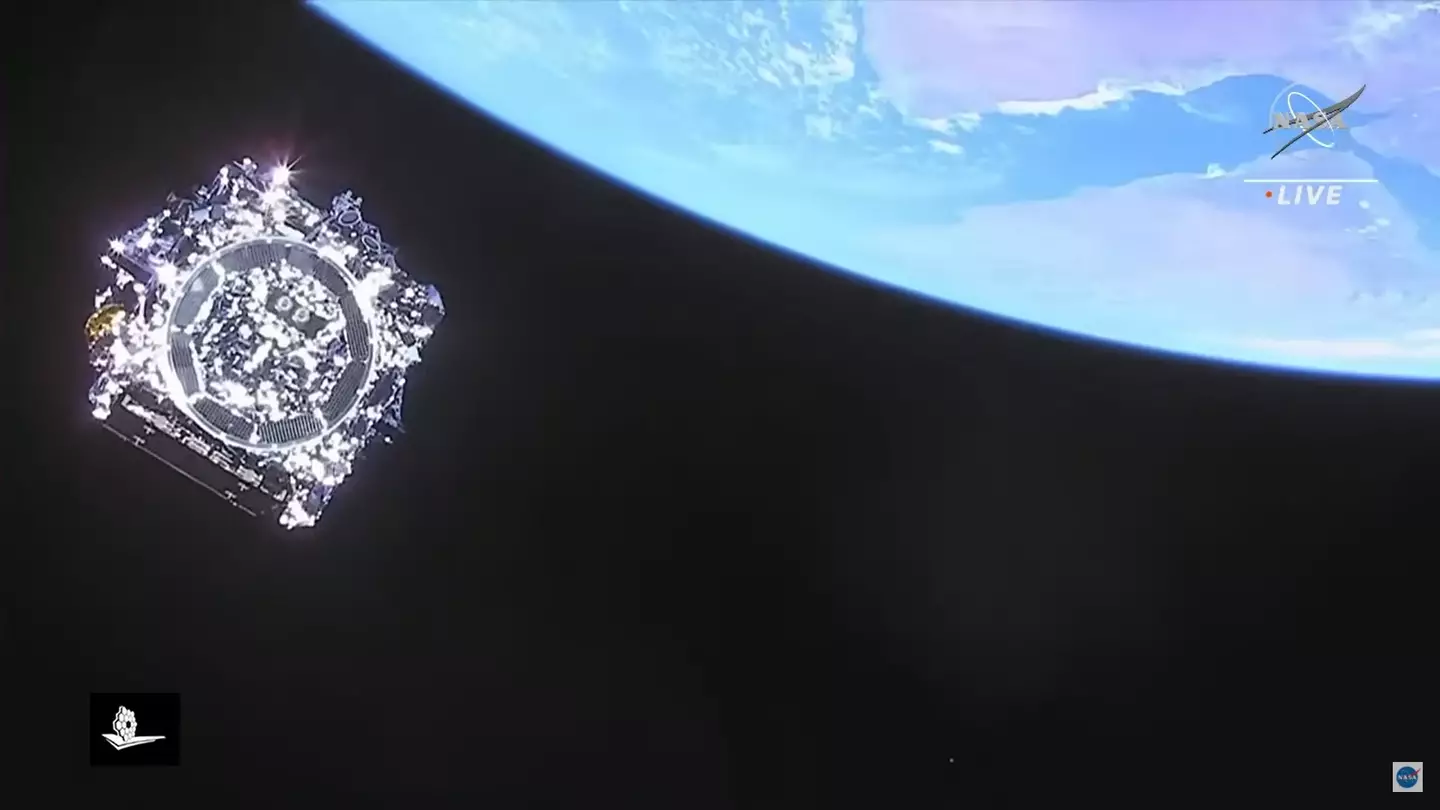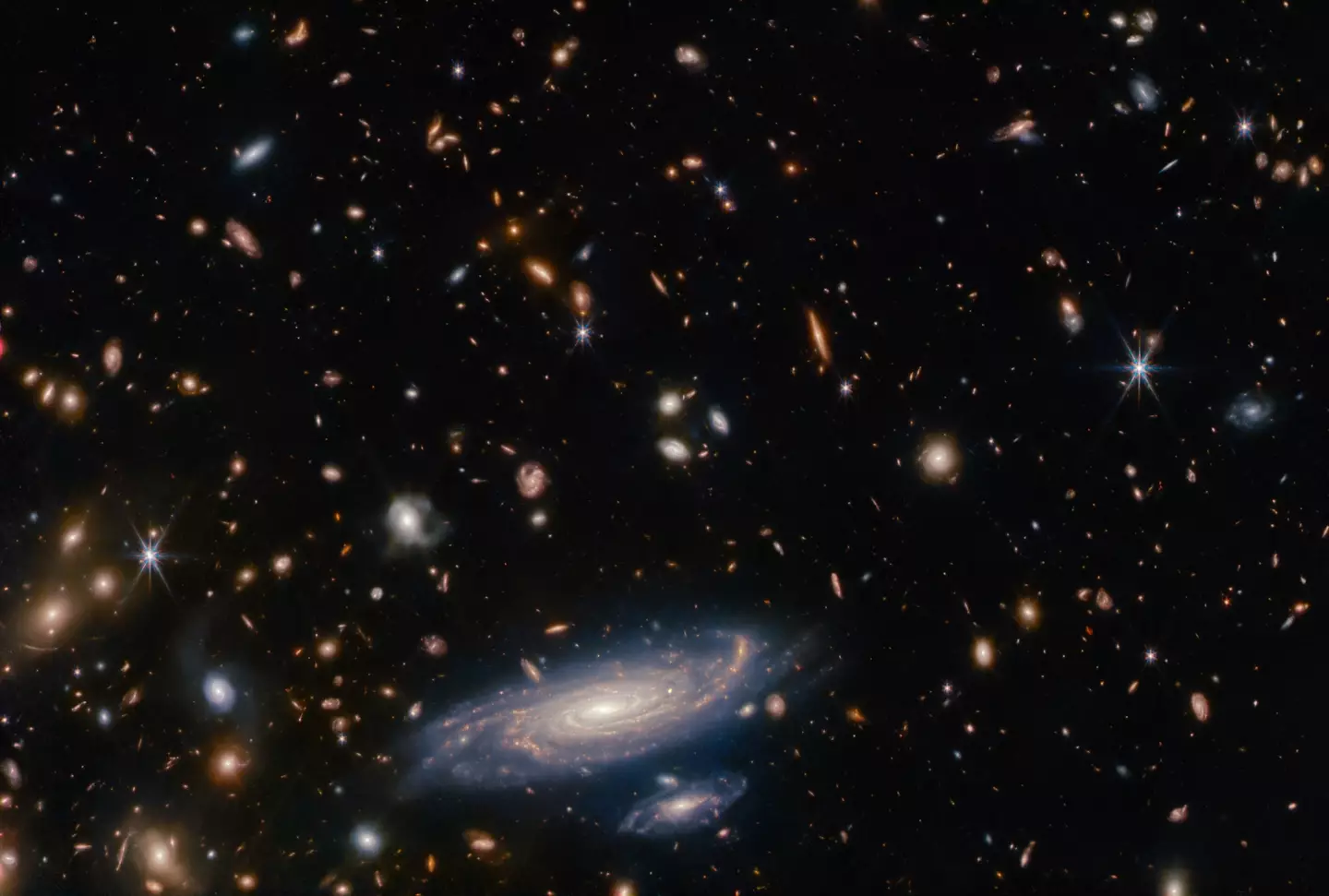.png)
NASA's hi-tech deep space telescope is at it again when it comes to discovering and understanding new and exciting things about the cosmos.
The James Webb Space Telescope, which was launched from the planet back in 2021, has spent the last two and a bit years travelling through the vacuum of space.
It's a piece of scientific ingenuity, with the telescope regularly sending back images to NASA headquarters showing us things our eyes couldn't possibly ever see.
It's also brought us amazing discoveries about black holes that scientists 'thought were impossible'.
Advert
In one of its latest discoveries, Webb has followed up on the work of NASA's infrared Spitzer Space Telescope.
Back in 2016, the Spitzer discovered seven planets orbiting the same star, which is known as TRAPPIST-1 in the scientific community.
About 40.7 light-years away from Earth, the star itself was discovered 24 years ago.
And now, researchers have used Webb to investigate one of the planets that were found.
Advert
The planet, known as TRAPPIST-1 b, is Earth-like in its composition, with it also roughly being the same size as our planet.
And the research has been groundbreaking - with it being the first time any light has been detected as being emitted from another planet outside of our solar system.

The light itself is infrared, with Webb able to use its Mid-infrared Instrument (MIRI) to detect it.
Advert
"The result marks an important step in determining whether planets orbiting small active stars like TRAPPIST-1 can sustain atmospheres needed to support life," NASA said in a statement.
"It also bodes well for Webb’s ability to characterise temperate, Earth-sized exoplanets using MIRI."
Thomas Greene, an astrophysicist at NASA’s Ames Research Center and lead author on the study published in the journal Nature, said: “These observations really take advantage of Webb’s mid-infrared capability.

"No previous telescopes have had the sensitivity to measure such dim mid-infrared light."
Advert
Sadly, though, it's missing one massive thing when it comes to supporting life - there's no atmosphere.
Scientists found this out by measuring both sides of the planet, with one side in permanent darkness and the other facing its star at all times.
It's also a bit warm - at around 232 degrees Celsius, so about as hot as your oven on a high setting.
Not an ideal temperature for living in, we'd say.
Advert
TRAPPIST-1 b also gets about four times the amount of energy that Earth gets from the Sun.

"There are ten times as many of these stars in the Milky Way as there are stars like the Sun, and they are twice as likely to have rocky planets as stars like the Sun,” Green said.
“But they are also very active – they are very bright when they’re young, and they give off flares and X-rays that can wipe out an atmosphere.”
The main thing is that Webb can keep analysing planets in such a way in the hope of finding another planet that might also hold the key to supporting life, like our own.
Featured Image Credit: Getty Stock Images / NASA, ESA, CSA, J. Olmsted (STScI)Topics: NASA, Science, Space, Technology, US News, World News